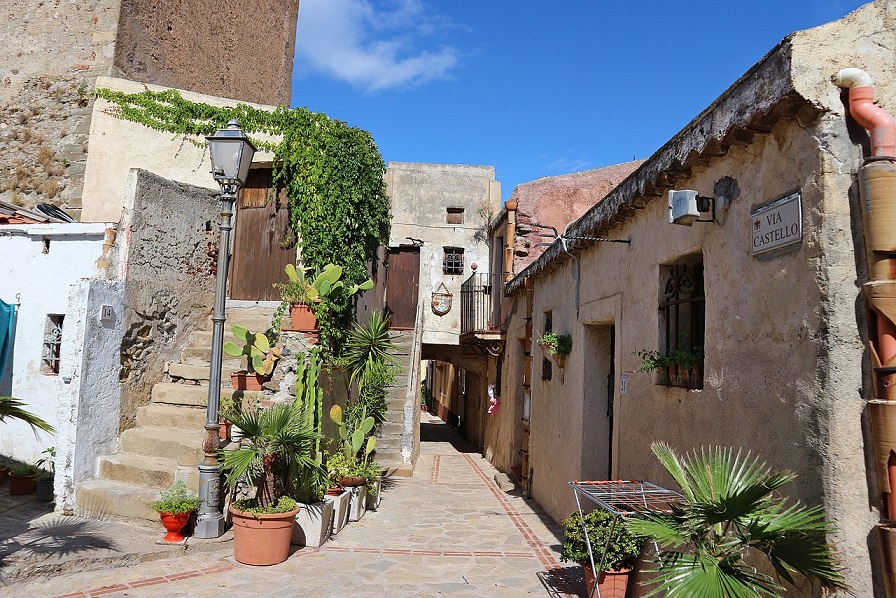
Brolo
Il nome Brolo deriva dal termine latino “Brolium”ed ha il significato di parco o giardino. Fin dall’antichità Brolo costituiva un nodo di rilievo per gli scambi commerciali dell’epoca. L’antico borgo medioevale nasce e si sviluppa intorno al castello costruito quasi a picco sul mare, esso domina un vasto tratto della costa tirrenica e proteggeva la zona dalle incursioni piratesche.
La città è situata lungo la costa tirrenica a circa 90 chilometri da Messina e a circa 145 chilometri da Palermo. Il territorio comunale, che ha un'estensione di 7,66 km², è bagnato a nord dal mare Tirreno ed è circondato dalla catena montuosa dei Nebrodi. L’accesso alla cittadella è consentito da due porte, quella denominata “fausa” alle spalle del Castello che guarda il mare, e l’ingresso principale con l’arco in arenaria e gli stemmi araldici dei principi Lancia.Nel centro storico si notano ancora antiche garitte e i camminamenti sulle mura cinquecentesche; si può anche notare il primo nucleo abitativo del borgo, che mantiene memoria del Medioevo.
La costruzione del castello risale al X secolo d.C. e al suo interno sono ospitati il Museo delle Fortificazioni Costiere, così come il Museo della Pena e della Tortura, che offrono un importante momento di riflessione su un periodo di storia denso di fascino e di avvenimenti importanti e rendono il Castello di Brolo testimone prezioso del suo tempo rendendolo un ponte tra il passato ed il presente della storia siciliana.
(English)
Brolo
The name Brolo derives from the Latin term "Brolium" and has the meaning of park or garden. Since ancient times Brolo was a major node for the commercial exchanges of the time. The ancient medieval village was born and developed around the castle built almost sheer above the sea, it dominates a vast stretch of the Tyrrhenian coast and protected the area from pirate raids.
The city is located along the Tyrrhenian coast about 90 kilometers from Messina and about 145 kilometers from Palermo. The municipal area, which extends for 7.66 km², is bathed in the north by the Tyrrhenian sea and is surrounded by the Nebrodi mountain range. Access to the citadel is allowed by two doors, the one called "fausa" behind the Castle overlooking the sea, and the main entrance with the sandstone arch and the heraldic coats of arms of the Lancia princes. ancient sentry boxes and walkways on the sixteenth-century walls; you can also notice the first housing nucleus of the village, which keeps memory of the Middle Ages.
The construction of the castle dates back to the 10th century AD. and inside there are the Museum of Coastal Fortifications, as well as the Museum of Punishment and Torture, which offer an important moment of reflection on a period of history full of charm and important events and make the Castle of Brolo a precious witness of the its time making it a bridge between the past and present of Sicilian history.